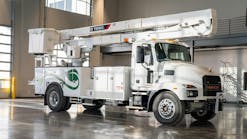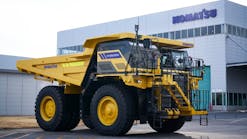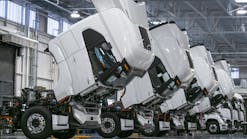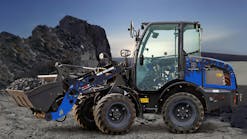Diesel emissions regulations that require equipment owners to clean up the exhaust stacks of their existing fleet are not coming — they're here. Firms that don't start investigating options now will forego the government's financial assistance and risk their businesses.
Last summer's news of the California Air Resources Board's plan to require investments in either retrofitting emissions-reducing technology to diesel engines or replacing them altogether had equipment professionals around the country wagging their heads and empathizing with the plight of small businesses in the Gold Rush State. Before anyone considers the California experience an isolated misfortune, however, they should consider that the West-Coast ruling, shortly after its completion, will likely be repeated in many states throughout the Union.
Several years ago, the U.S. Circuit Court of Appeals for the District of Columbia ruled that under the federal Clean Air Act, California is the only government in the United States that can initiate emissions standards for existing nonroad engines. The court stated not only that EPA has no authority to do so, but also that other states cannot enact standards except those adopted by California.
Emissions from the existing fleet of nonroad diesels represent a serious public-health problem not only in California, but also nonattainment areas in 19 other states and the District of Columbia that fail to meet minimum health standards. EPA has the power to withhold federal funding for road projects in these states in order to compel them to clean up their air. They will move pretty quickly to adopt appropriate elements of the California ruling.
Lest you classify this threat as merely imminent, don't forget that there are several projects around the country that are already dealing with restrictions on the kind of equipment clean enough to work on their sites.
Today on the Illinois Department of Transportation's Dan Ryan Expressway project, on the O'Hare airport modernization program, on the Wisconsin DOT's Marquette Interchange, and Massachusetts' Massport Contract, project owners have written detailed restrictions on the emissions technology that must be employed on diesel engines used on the site, the fuel injected into their cylinders, and the amount of idling time tolerated.
These projects pick up the momentum developed in diesel emissions-reduction initiatives written into the contracts for Boston's Central Artery/Tunnel Project, the I-95 New Haven Harbor Crossing in Connecticut, the World Trade Center Diesel Emissions Reduction Project, the Community Benefits Agreement of the Los Angeles Airport's Master Plan, and retrofit demonstration projects in the City of Houston, the Port of Seattle, and Sea-Tac International Airport.
Hand-wringing, complaining, or ignoring these truths is a risky waste of time. Most businesses that depend on diesel construction equipment will, sooner rather than later, find themselves with the choice of either investing in equipment to comply with emissions restrictions or working illegally. Now is the time to find out how to clean up diesel exhaust and gain some experience with the technologies.
The good news about demonstration projects and proliferating local restrictions is that the hardware for reducing diesel pollutants — and the manufacturers and dealers who sell and support the equipment — is gaining real-world experience. Government grants are supporting private industry's use of the new technologies. Accelerating use of the technologies is already drawing competitive vendors into the market, and the government continues to find ways to fund grant programs to help businesses pay for the transition.
1 | 2 | 3NEXT PAGE



